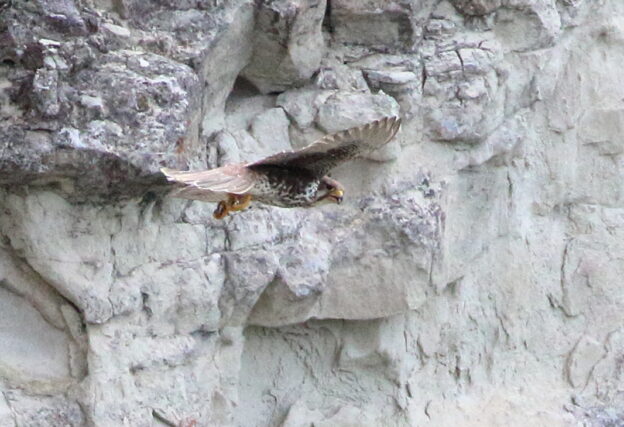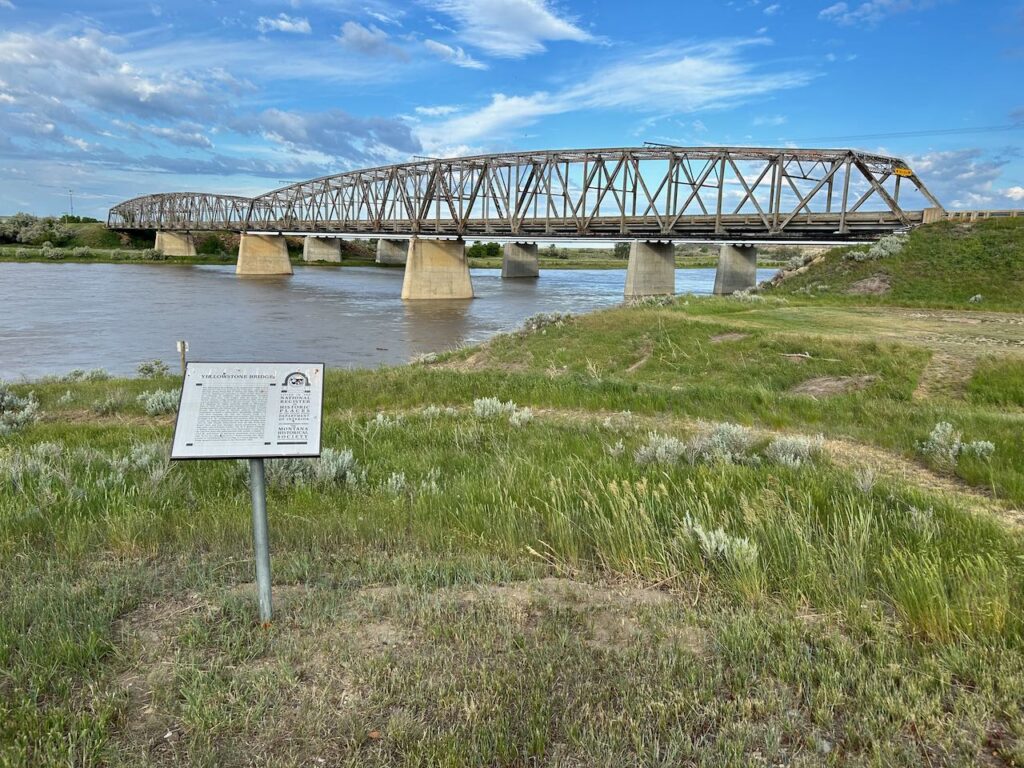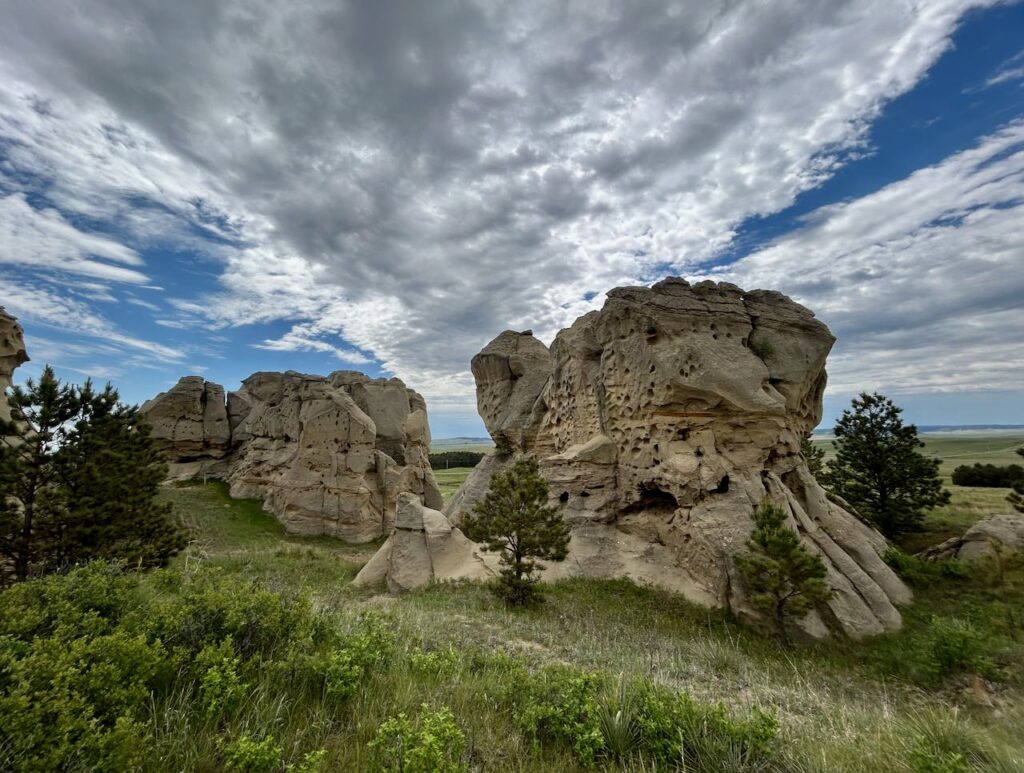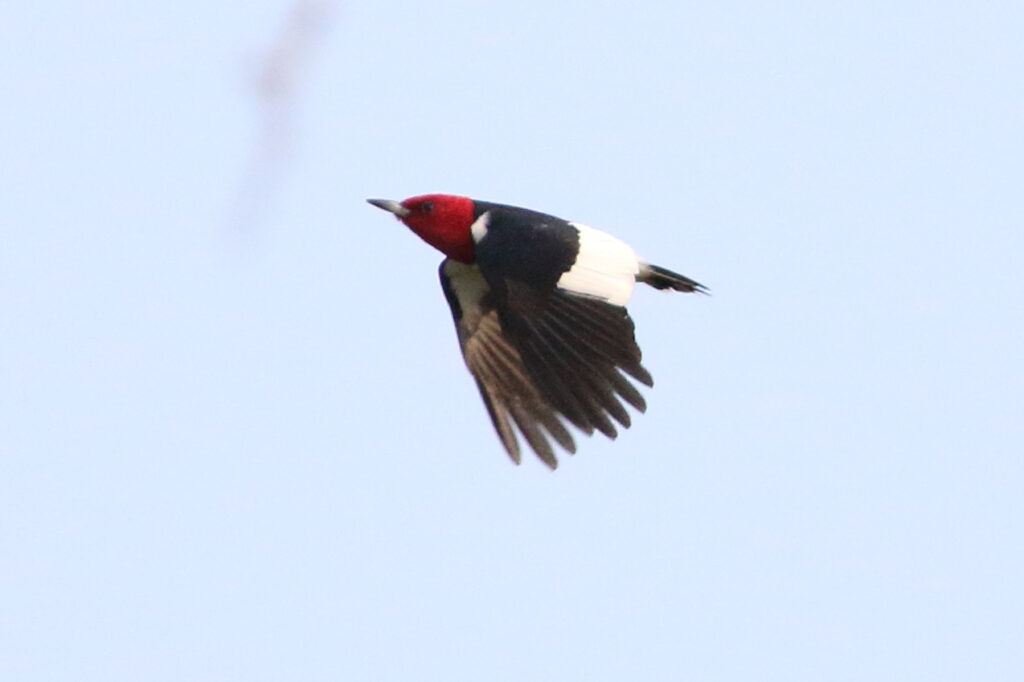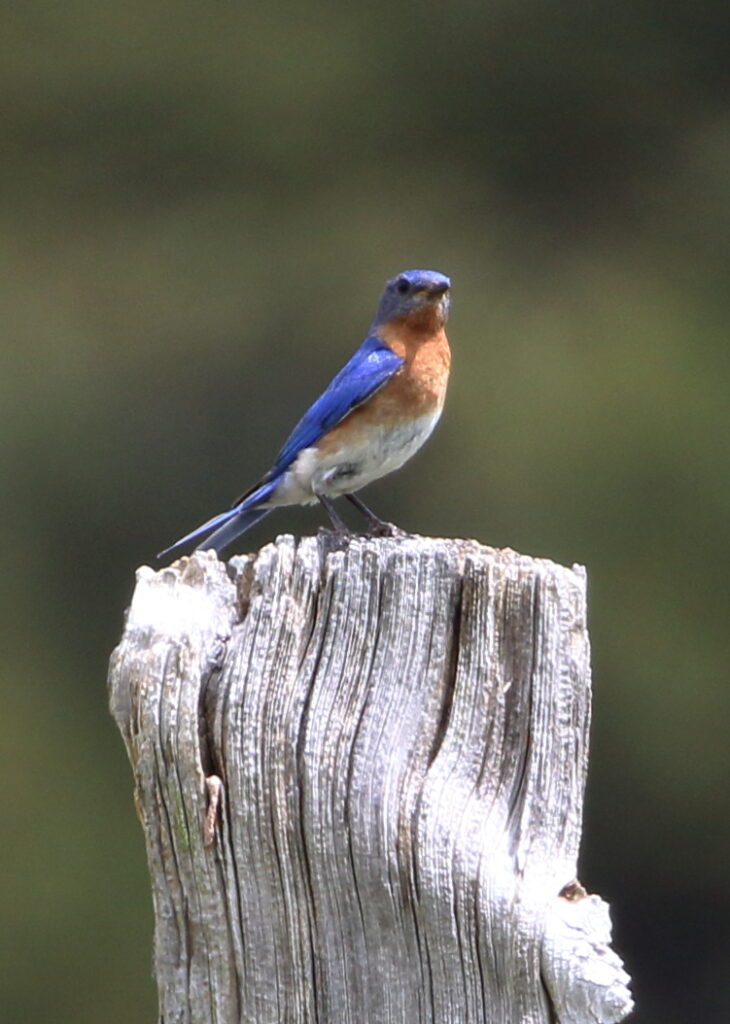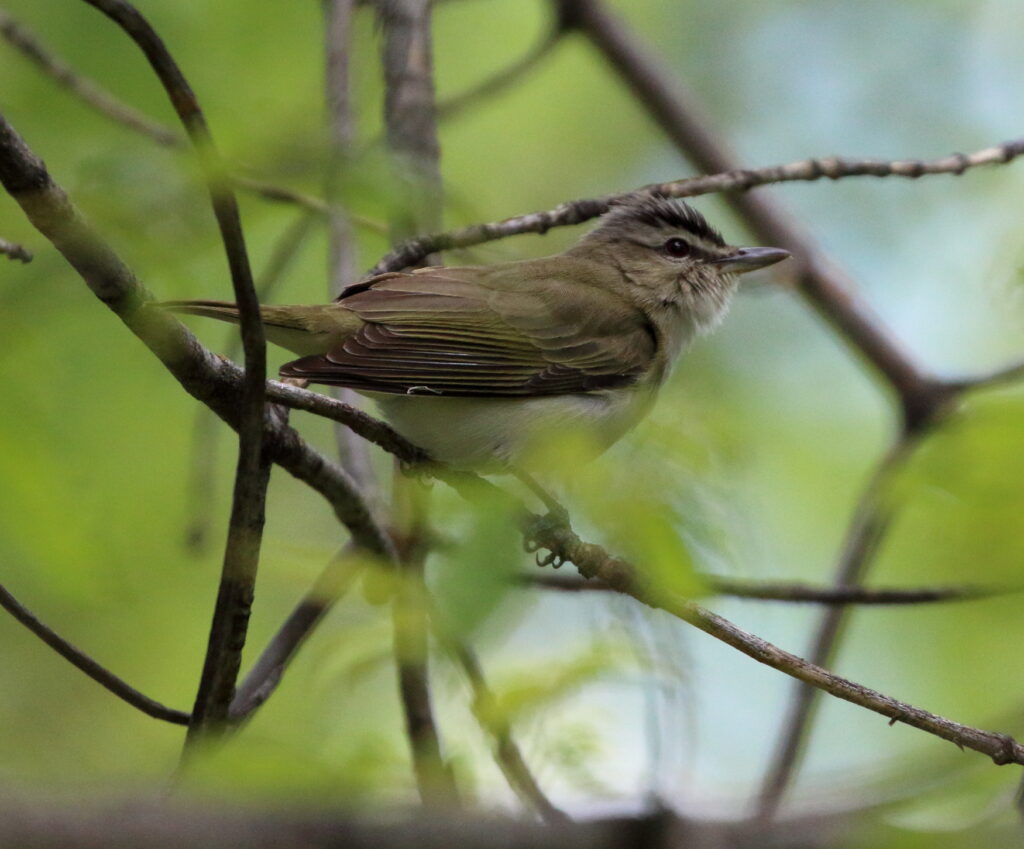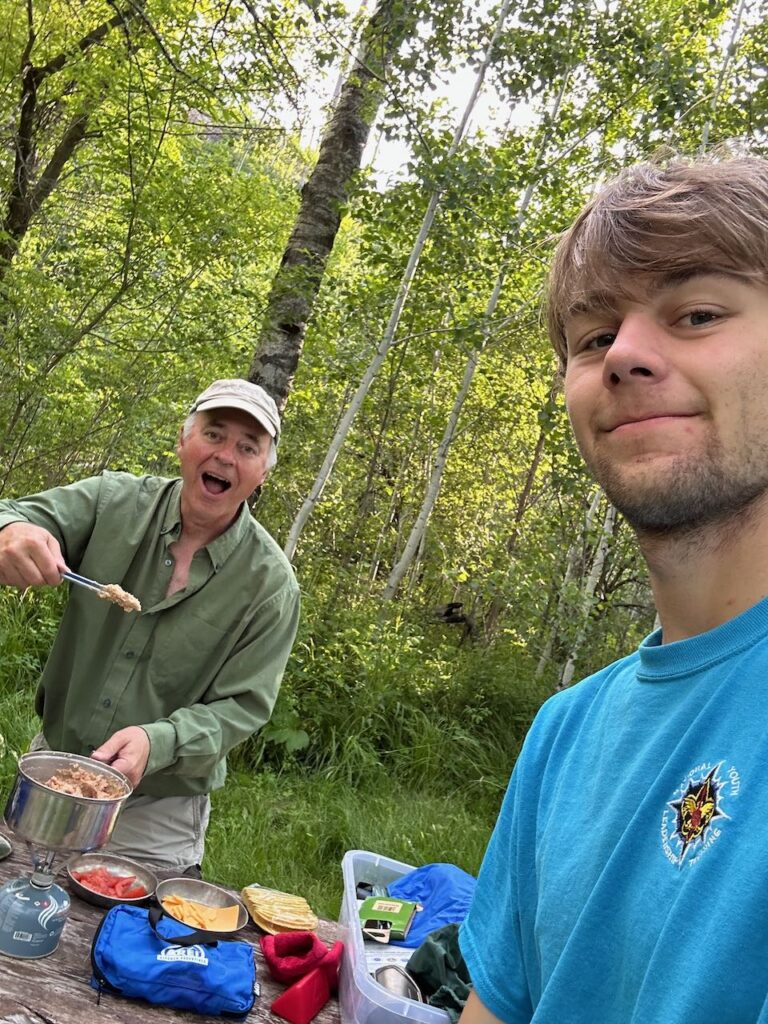Just so you don’t get lost in the narrative below, be sure you catch up with our last post—or, better yet, begin with the first post in this series!
We made our way out of the Ekalaka Hills along a different road than the one we came in on—and are so glad that we did! This route paralleled the top of a dramatic rim that dropped hundreds of feet to the plains below. As we drove, we experienced a wealth of warblers, nuthatches, Mountain Bluebirds, wrens, and other songbirds. I wasn’t quite satisfied with our view, though, so I told Braden, “Pull over. I want to walk to the edge.”
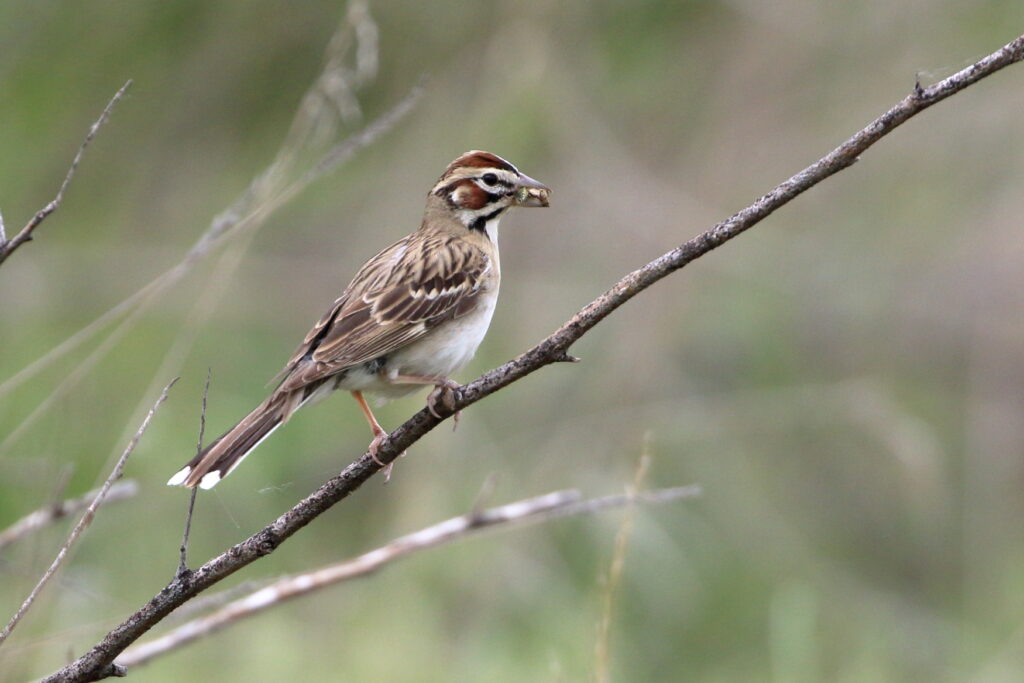
Even as I approached the rim, I could see White-throated Swifts and Violet-green Swallows working the cliffs, and once we got there we experienced breathtaking views, perhaps all the way to South Dakota . Then I saw the bird I especially had been hoping for. “Braden!” I called. “Prairie Falcon!”
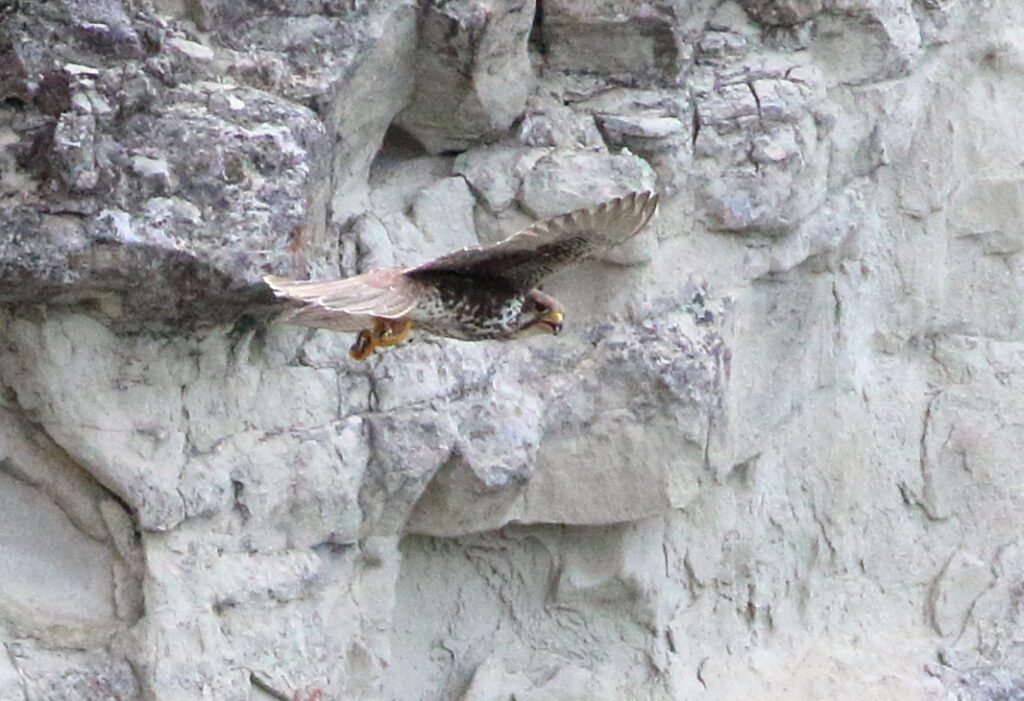
This was a bird we had wanted to see the entire trip, but never dreamed of seeing in such dramatic circumstances. Braden hurried over to join me and we watched as this powerful, brown-backed bird deftly cut through the skies in front of us. “Wait. There’s a second one,” I said. “You’re right,” Braden exclaimed.
We spent a full ten or fifteen minutes enjoying the prowess of these magnificent hunters, and it made both of us feel good to know that the pair was undoubtedly nesting in a perfect place for them. Alas, we still had some serious goals ahead of us that day, so we reluctantly said goodbye and continued on our way.
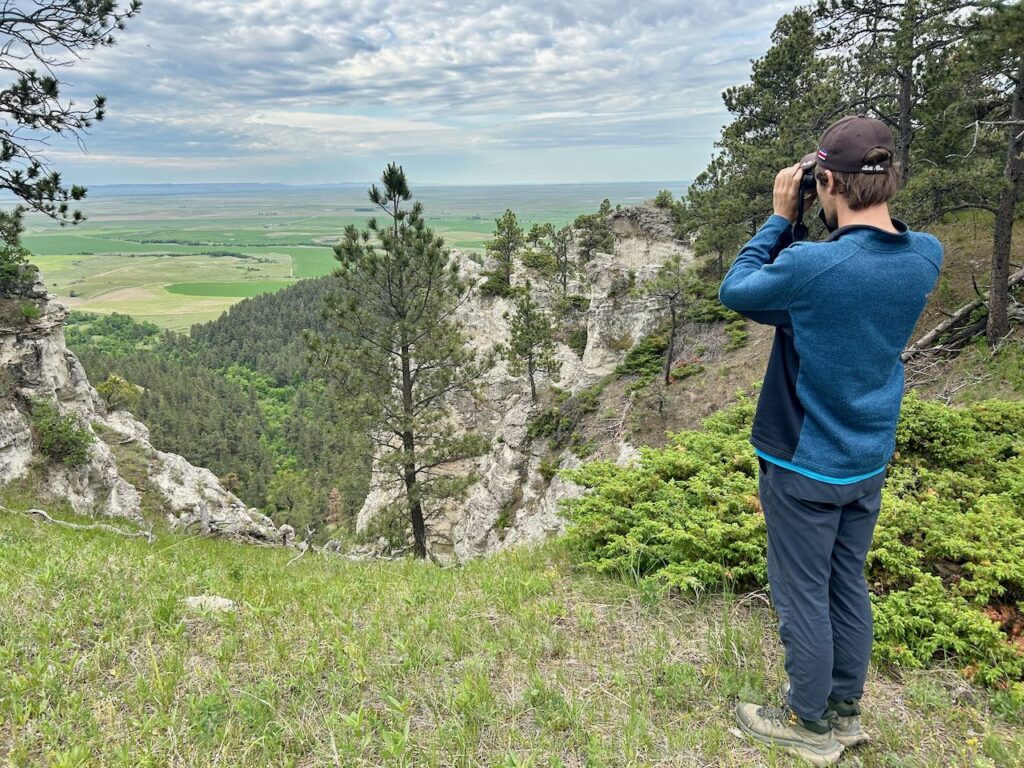
As mentioned in our last few posts, we began our trip needing to bird seven Montana counties to totally fill in our Montana eBird map. In the past week we had knocked off Daniels, Prairie, Wibaux, Fallon, and Carter Counties (see our last post, “Adventures in Ekalaka”). Today we faced the final two: Powder and Treasure Counties. The first proved easy. Driving twenty or so miles south of the Ekalaka Hills, we cut SW along a well-maintained dirt road to Hwy 212 and then turned NW. Eight miles later, we crossed into Powder River County, and immediately began picking up Mourning Doves, Eastern and Western Kingbirds, meadowlarks, and other “roadside attractions.” To meet our ten-species minimum, however, we stopped at a small riverside fishing access in Broadus. There, we collected 13 species including Lark Sparrows, Lazuli Buntings, Yellow Warblers, and yet another Red-headed Woodpecker! Continuing on toward Miles City, we left Powder River County with a total of 21 species. Not bad for just passing through!
By the time we reached Miles City, our trip had taken us almost 2,000 miles, and I guess a collective fatigue had caught up with us. “Do you mind if we just find a coffee shop and chill out for a while?” I asked Braden. He was totally agreeable, so we spent an hour or so relaxing in a City Brew I’d frequented while teaching a writing workshop there several years before. It was just what we both needed. More important, it prepared us for our last lifetime Montana county!
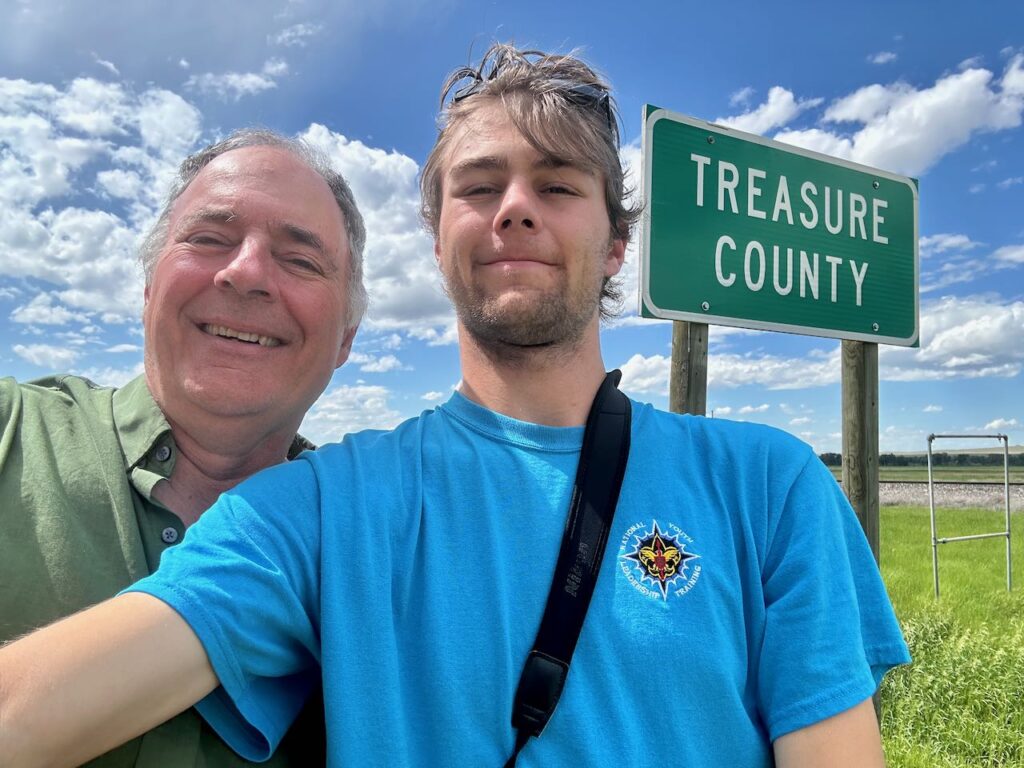
To reach Treasure County, we tooled down I-94 to the town of Forsyth, and then paralleled the Yellowstone River, driving west. About fifteen minutes later, we reached a sign marking the county line! We, of course, got out to immortalize the moment with our phone cameras, but even posing next to the sign we could hear and see Red-winged Blackbirds, a Western Meadowlark, and four or five other birds. We continued driving until we encountered a likely dirt road leading off to the north. We intended to try to reach the Yellowstone River, but found a promising thicket right before the road crossed some railroad tracks. “Let’s stop here,” I said.
Immediately, we were rewarded with a Lazuli Bunting, American Goldfinch, Yellow Warbler, Yellow-breasted Chat and other birds. The stars? A pair of American Redstarts that landed right in front of us, posing beautifully. Unlike with the Plumbeous Vireo (see our last post), I was prepared this time and took what may be my best American Redstart photos ever! Braden and I delighted in watching these birds for more than a minute before they flitted off into the thicket. But one more Treasure County surprise lay in wait.
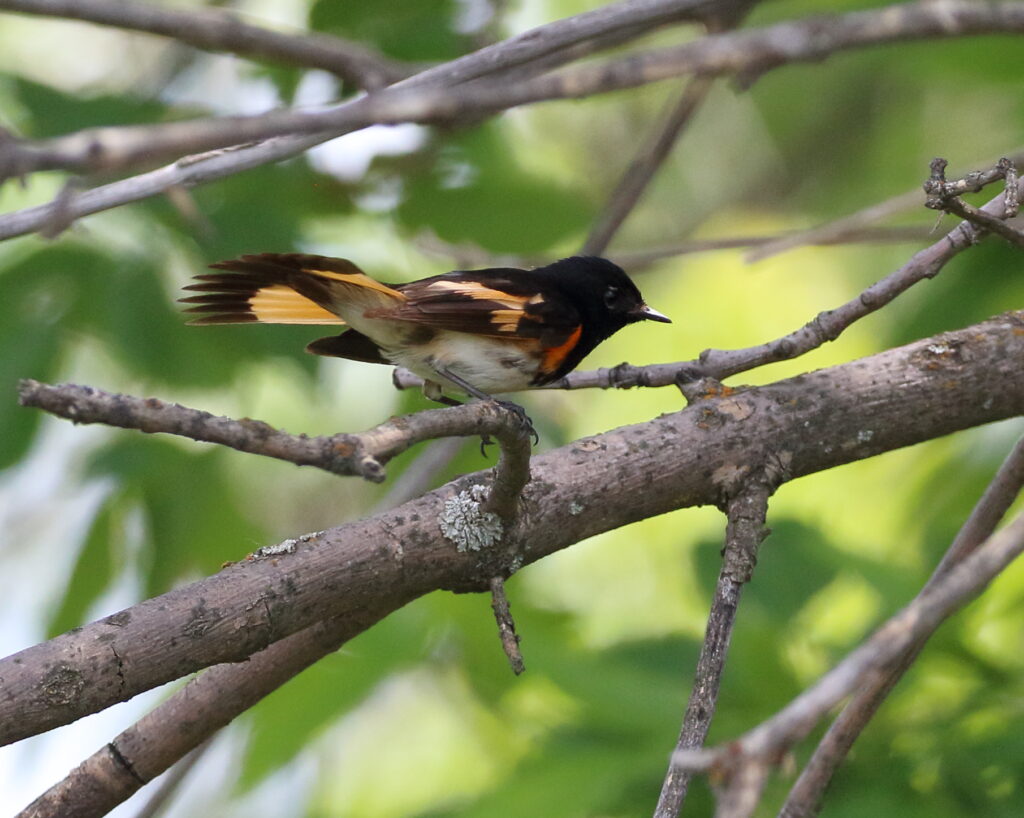
Driving a bit farther, looking for a place to turn around, we headed left down a dirt road. “Uh, this looks like a driveway to that farm over there,” I said, but right then we both saw it—yet another Red-headed Woodpecker! (See our last post.)
I, of course, climbed out to try to get a decent photo since none of the other RHWOs had cooperated on the trip. This one, fortunately, did—more or less—peaking out behind a telephone pole. It was a great way not only to wrap up our Treasure County list (21 species total), but to punctuate the completion of our goal of birding every county in the vastness of Montana.

Our Eastern Montana adventure was far from over. It would take us on a wonderful adventure to a private ranch, back to perhaps my favorite Montana place to bird (see our post Bear Canyon—Montana’s “Tropical Birding” Paradise), and above ten thousand feet to witness the enchanting lives of Black Rosy-finches. Rather than blog about these last adventures, though, I’ve decided to write a book, so you’ll just have to be patient. Braden and I hope that you’ve enjoyed these posts, however, and rest assured, we have enjoyed sharing them with you. Please be sure to share, and if you’d like to support FatherSonBirding, consider purchasing new copies of some of Sneed’s books. Speaking of that, his long-awaited new adult book, Birding for Boomers, is now available for pre-order. Don’t be shy. Click on the cover below now!
Trip Stats:
Total Species Observed: 203 (from a goal of 185)
Total eBird checklists: 209
New Montana Life Birds: 5 + 1 (Broad-tailed Hummingbird, Broad-winged Hawk, Least Tern, Eastern Bluebird, Black Rosy-Finch plus—for Braden—Piping Plover)
Miles Driven: 2,482
Our eBird Trip Report: https://ebird.org/tripreport/246744


